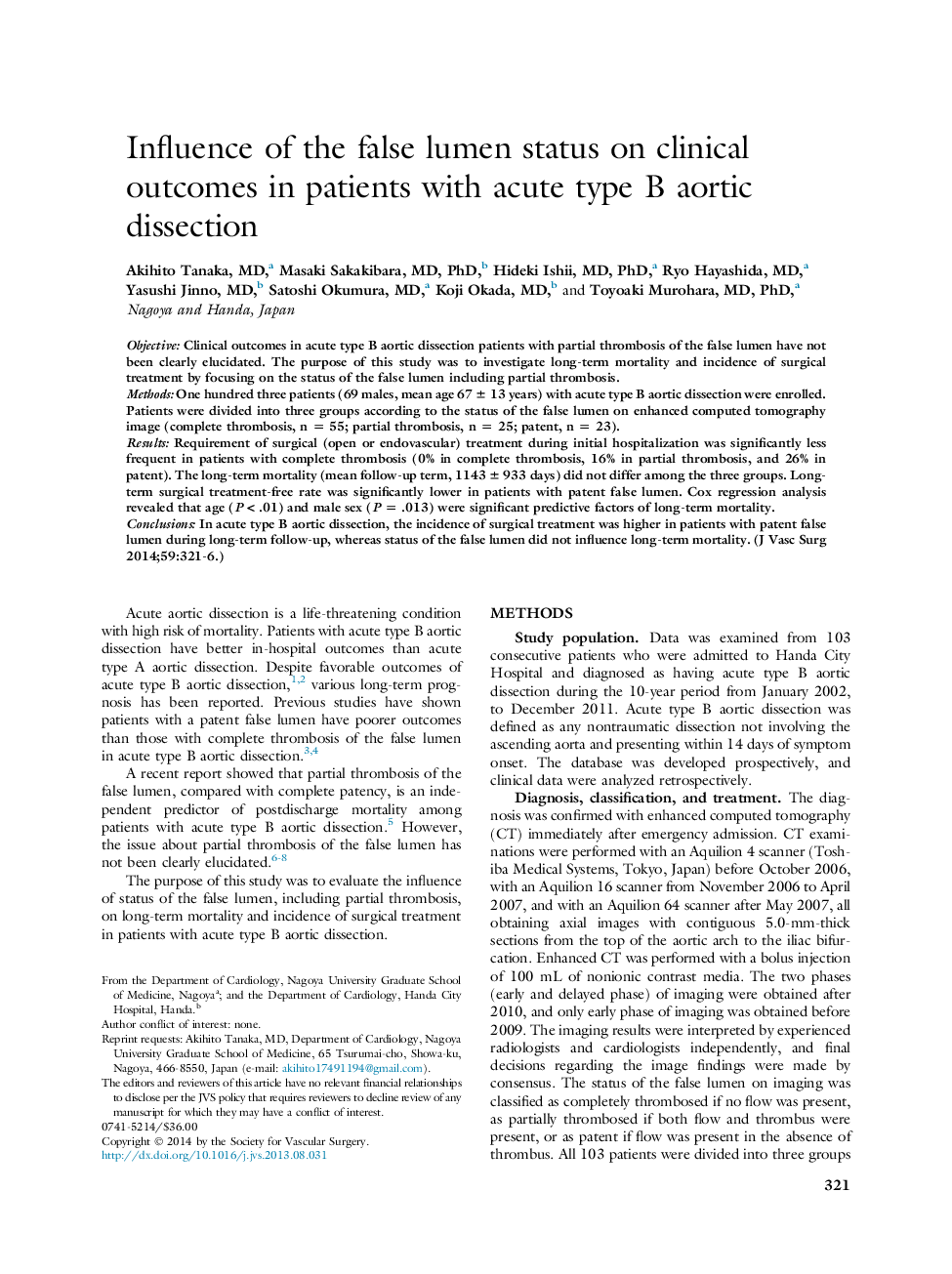| Article ID | Journal | Published Year | Pages | File Type |
|---|---|---|---|---|
| 2988919 | Journal of Vascular Surgery | 2014 | 6 Pages |
ObjectiveClinical outcomes in acute type B aortic dissection patients with partial thrombosis of the false lumen have not been clearly elucidated. The purpose of this study was to investigate long-term mortality and incidence of surgical treatment by focusing on the status of the false lumen including partial thrombosis.MethodsOne hundred three patients (69 males, mean age 67 ± 13 years) with acute type B aortic dissection were enrolled. Patients were divided into three groups according to the status of the false lumen on enhanced computed tomography image (complete thrombosis, n = 55; partial thrombosis, n = 25; patent, n = 23).ResultsRequirement of surgical (open or endovascular) treatment during initial hospitalization was significantly less frequent in patients with complete thrombosis (0% in complete thrombosis, 16% in partial thrombosis, and 26% in patent). The long-term mortality (mean follow-up term, 1143 ± 933 days) did not differ among the three groups. Long-term surgical treatment-free rate was significantly lower in patients with patent false lumen. Cox regression analysis revealed that age (P < .01) and male sex (P = .013) were significant predictive factors of long-term mortality.ConclusionsIn acute type B aortic dissection, the incidence of surgical treatment was higher in patients with patent false lumen during long-term follow-up, whereas status of the false lumen did not influence long-term mortality.
